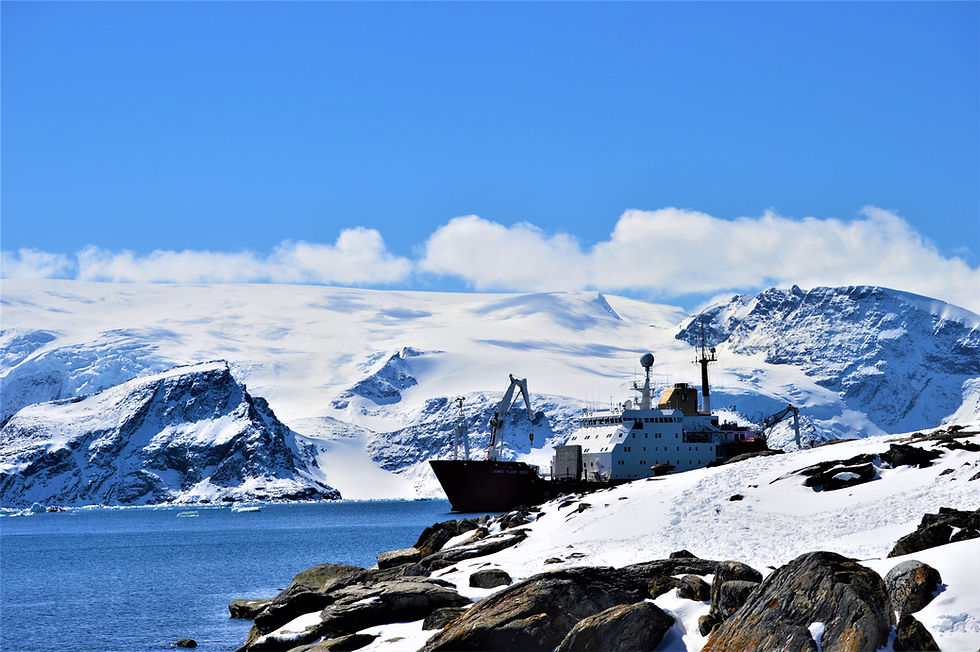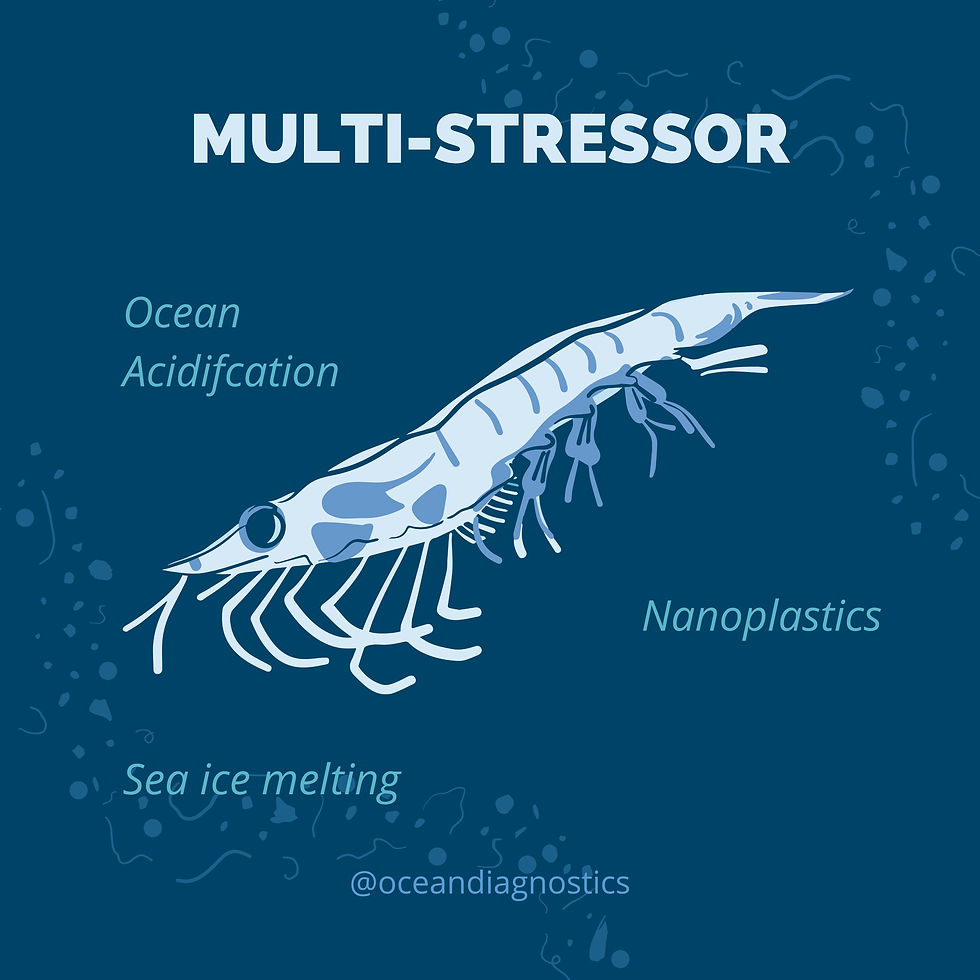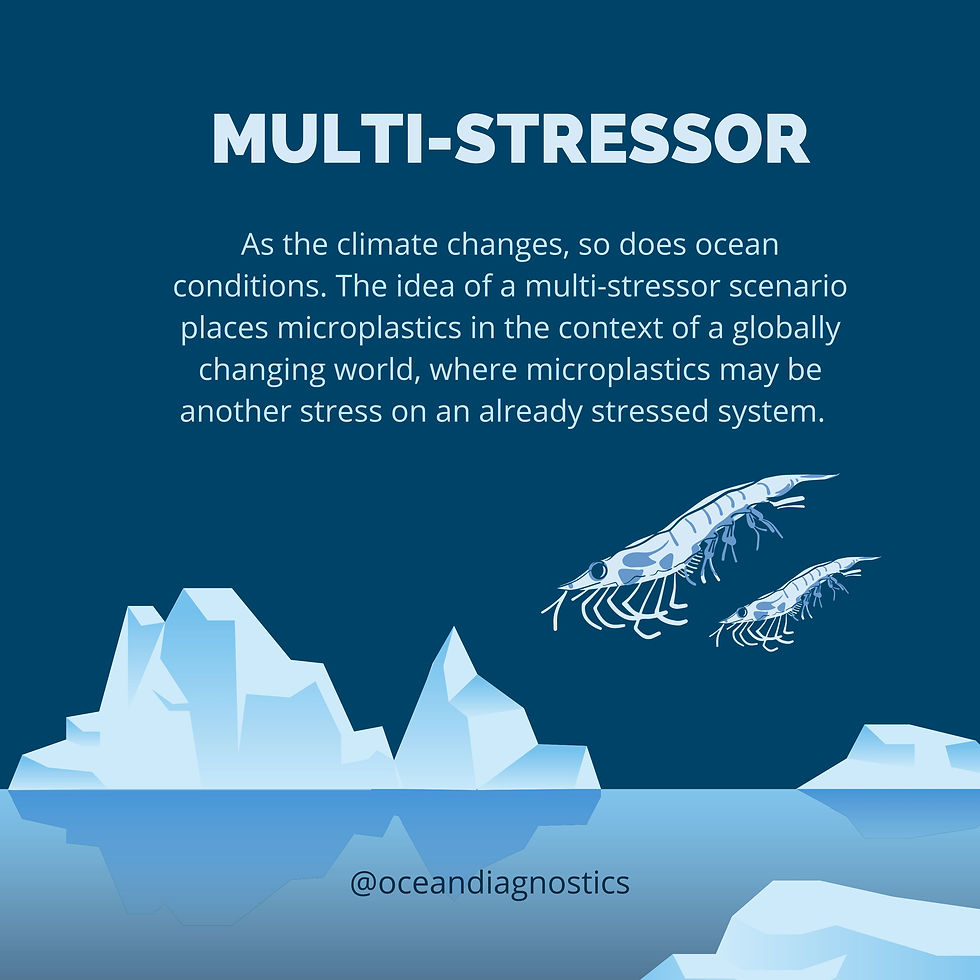Examining the Effects of Multi-Stressors
Why are Microplastics and Nanoplastics Bad? As the climate changes, small plastics could have big impacts

Microplastics' impact on our environment and health is a growing concern. Even though microplastics are less than five millimetres, they can potentially harm our ecosystems. Nanoplastics, which are even smaller, can pass through tissues, raising more concerns. The changing ocean brings additional threats, such as warming and increasingly acidic waters. Together, these issues create“multi-stressor” scenarios, and it is important to consider all these factors when examining the effects of microplastics and nanoplastics on our planet.
Dr. Emily Rowlands, a researcher with the British Antarctic Survey and recent PhD graduate from the University of Exeter and Ocean Diagnostics’ collaborator, conducted research on this topic. Her work examined the combined effects of nanoplastics and ocean acidification on krill embryos, which provides valuable information and insights on "multi-stressor" scenarios. Through her work, we can better understand how these stressors impact our marine ecosystems.

As the climate changes, so do ocean conditions, notably in terms of temperature, ocean acidification, sea-level rise and melting ice. The term “multi-stressor” can be broken down into many nuisances. There are currently several threats to ocean ecosystems.
The term “multi-stressor” can be broken down into the combined effect of one or more stressors or threats.
In the context of global environmental issues, marine plastics represent another stress on an already stressed system.
Ocean acidification has been highlighted as a threat to marine organisms. In simple terms, more carbon dioxide in the atmosphere increases the carbon dioxide dissolving into seawater, which increases acidity. Some studies have shown that ocean acidification can impact animals’ abilities to form shells or exoskeletons or maintain homeostasis (i.e., the ability to maintain a healthy internal state in changing external conditions).
Antarctic krill are important creatures that sustain ocean food webs. They have evolved in an isolated polar environment but now face unprecedented stressors due to human-created threats.

Dr. Rowlands investigated how nanoplastics might affect krill embryo growth and the multi-stress effects when nanoplastics are combined with predicted future ocean acidification conditions.
When nanoplastics and ocean acidification were both present, she discovered that embryo growth was negatively impacted.
“It was just this multi-stressor situation where we saw a difference,” Dr. Rowlands notes.
“It was just this multi-stressor situation where we saw a difference,” Dr. Rowlands notes.
Her study demonstrated how nanoplastics can add stress to creatures already contending with ocean acidification.
Microplastics and nanoplastics have been found to have detrimental effects on individuals, however, it is important to recognize that their impact extends beyond just individual animals. The research conducted by Dr. Rowlands highlights the necessity of examining plastic pollution in the context of a dynamic ecosystem that is subjected to multiple sources and levels of stress.
Our team was delighted to collaborate with Dr. Emily Rowlands on a microplastics flux profiling project during a British Antarctic Survey. Learn more about her research and collaborations with Ocean Diagnostics.
Find out what we are doing to detect and diagnose microplastic pollution.
Findings from this story were published in Frontiers in Marine Science. The scientific article is titled "The Effects of Combined Ocean Acidification and Nanoplastic Exposures on the Embryonic Development of Antarctic Krill".
Ocean Diagnostics Inc. (ODI) is a Victoria, B.C.-based environmental impact company that diagnoses and protects our planet from the threats of plastic pollution and biodiversity loss. Through innovative technology, cutting-edge laboratory capabilities and collaborative partnerships, ODI enables scientists and the public to collect the data needed to influence local and global solutions.
